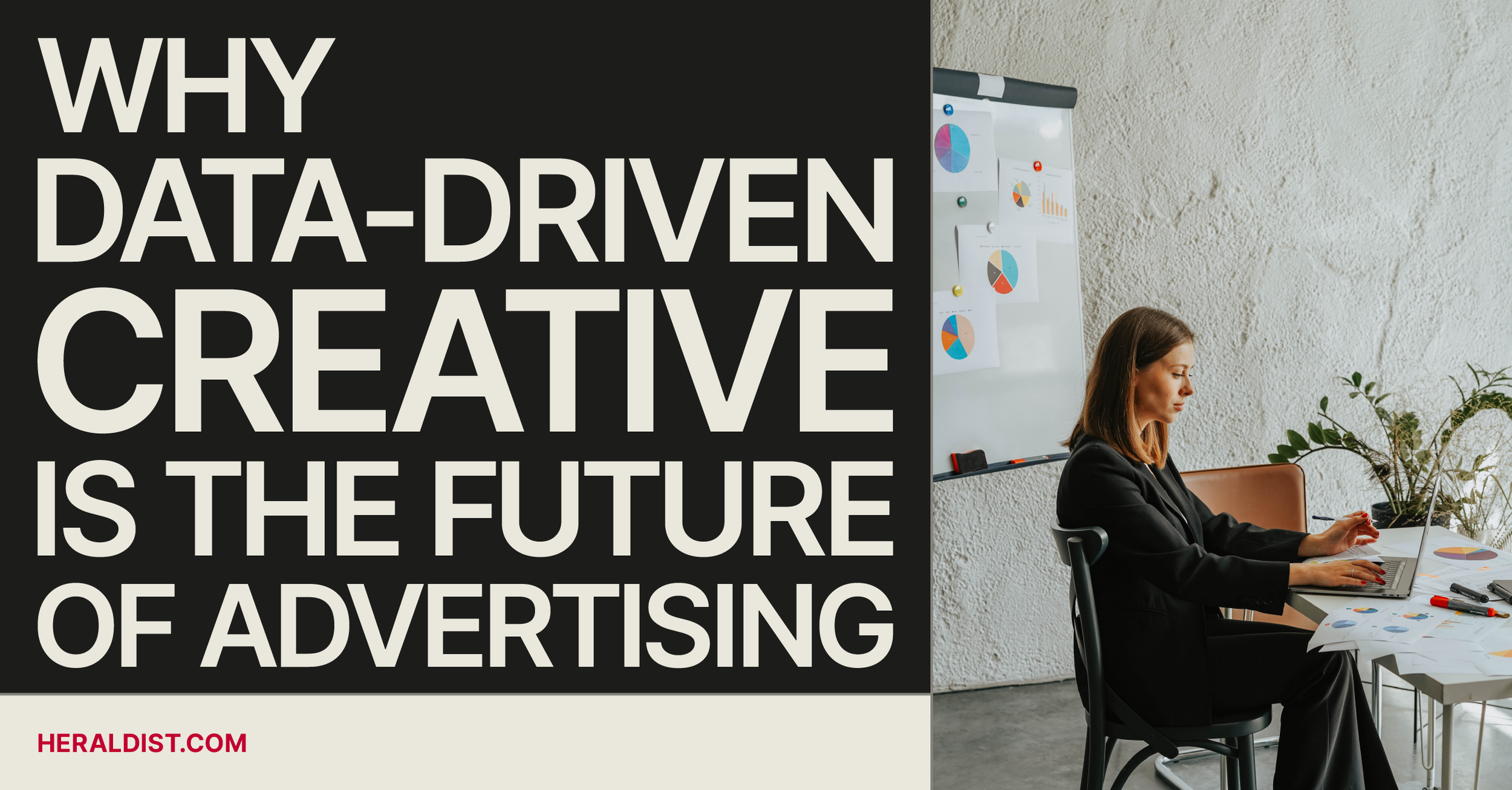Why Data-riven Creative is the Future of Advertising
I present this scenario: you begin working on a new campaign and when the brief comes it says “Anything goes”. Now, at a first glance, that sounds amazing from a creative perspective. That means you can dig up all those crazy and award-worthy ideas that all the clients before said no to because they didn’t have the courage or the budget or the openness to try. And you do that and it’s really exciting as you put the ideas on paper, but then you realise something: Who is this campaign for? Will those ideas actually work? Will they reach who they need to reach or will that campaign be seen only by other advertisers who will die of jealousy because you actually convinced your client to do something this fun?
Data can sometimes act as the walls of a house. Instead of having a vast plain on which you can build anything, now you have just a room. You go inside and seeing the layout of the room already gives you ideas of what you can do so the inside of that room becomes livable and nice to sit in. Of course, you can look at that data as restrictive, and it is from a certain point of view, but having guidelines can sometimes generate the best ideas that can actually work. I’m not going to talk actual numbers, but the overall impression is that data-driven campaigns actually perform better. Basing your creative choices on data can make the campaigns more in tune with how the potential customers behave and can bring your campaign closer to people.
One of the most important aspects of data-driven creative is that having access to analytics during the campaign can help you optimise it as you go. You can divide your target audience into segments and speak to each of them differently and then pivot if necessary. We don’t have to wait anymore until a campaign is done and then some to find out if the campaign actually did something for a brand, now we can use all sorts of monitoring tools during the progress of the campaign to get customer feedback and understand if the campaign is effective.
In conclusion, letting data guide you can create massive opportunities to actually get your work in front of the people who want to see it and not just shooting in the dark. It’s all a matter of perspective and how much you want to embrace the future or hold yourself back.
Chat-GPT Enhanced:
Imagine this scenario: You're tasked with a new campaign, and the brief simply states, "Anything goes." At first glance, it seems like a dream come true for a creative professional. You envision bringing forth those daring, award-worthy ideas that previous clients rejected due to lack of courage, budget constraints, or simply a closed mindset. As you jot down these exciting concepts on paper, a question suddenly dawns on you: Who is the target audience for this campaign? Will these ideas truly resonate and reach the intended recipients, or will they only be seen by fellow advertisers, who will envy your audacity while failing to achieve any real impact?
Data can be likened to the walls of a house. Instead of an expansive canvas where anything is possible, it provides structure and boundaries—a room in which you can create a livable and inviting space. While some may view this as limiting, guidelines derived from data often yield the best ideas that are not only feasible but effective. Without delving into specific figures, it is generally understood that data-driven campaigns tend to outperform others. By basing creative choices on data, campaigns become attuned to the behaviors of potential customers, forging a stronger connection between the campaign and its audience.
One of the critical advantages of data-driven creative is the ability to optimize campaigns in real-time. Segmenting the target audience allows for tailored messaging, ensuring each group receives a customized approach. Monitoring tools now provide immediate feedback during the campaign's progression, eliminating the need to wait until it concludes to gauge its impact on a brand. We can now actively gather customer insights and measure effectiveness while the campaign is ongoing.
In conclusion, allowing data to guide creative endeavors opens doors to significant opportunities. It ensures that your work reaches the people who genuinely want to see it, rather than taking shots in the dark. Embracing data-driven creative is a matter of perspective and a willingness to embrace the future rather than holding oneself back. By leveraging the power of data, you can elevate your campaigns to new heights, achieving results that leave a lasting impression on both brands and consumers alike.

